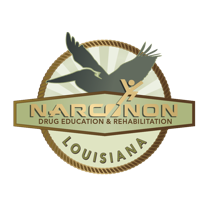Narconon Is Effective Treatment for Opioid Addiction
 Narconon is a unique addiction treatment program. It is a none twelve step program that is individualized and non-religious and people from any denomination are welcome. There is not a set amount of time that it takes for any one person to finish the Narconon rehab program, it can take anywhere from about two and a half months all the way to a year. On average, most people finish the program within about four and a half months. Narconon serves people with all kinds of substance abuse problems. It’s been found that it works very well for everyone and especially those people who are suffering from an addiction to opioids.
Narconon is a unique addiction treatment program. It is a none twelve step program that is individualized and non-religious and people from any denomination are welcome. There is not a set amount of time that it takes for any one person to finish the Narconon rehab program, it can take anywhere from about two and a half months all the way to a year. On average, most people finish the program within about four and a half months. Narconon serves people with all kinds of substance abuse problems. It’s been found that it works very well for everyone and especially those people who are suffering from an addiction to opioids.
Opiate Addiction; “I Just Want to Numb the Pain”
People who get addicted to opiate usually do so to numb some type of pain. This pain can be physical or mental in nature. The main problem for opiate addicts when they try to quit using, is that all the pain that they were trying to numb for so long, often all comes back at them at once. When someone has a physical addiction to opiates the withdrawal can be extremely terrible and very hard to get through. Opiate withdrawal usually starts out feeling very similar to someone getting a cold or the flu. The symptoms of early withdrawal are as follows:
- Runny nose
- Body Aches
- Cold Sweats
- Nausea
- Extreme fatigue
These symptoms start as early as few hours after the person used their last dose. If the person does not take more opioids at this point, their withdrawal symptoms will become more severe. Depending on the opioid, the severe stages of withdrawal will last anywhere to a few days to a few weeks. Heroin withdrawal usually lasts about four or five days, while oxycodone withdrawal can last a few days and then start up all over again a week later. Some of the severe symptoms of opioid withdrawal are as follows:
- Body aches
- Hot and cold sweats
- Nausea
- Vomiting
- Diarrhea
- Crawling sensations on skin
- Extreme irritability
- Insomnia
- Extreme fatigue
- Muscle weakness
- Depression
- Anxiety
After Withdrawal, Is There Life at the End of the Tunnel?
It is often found after a person goes through the most severe stages of withdrawal from opiates they will sometimes still suffer other symptoms. People who have quit using opiates within the past couple years often say that they just do not feel normal, or as good as they did before they ever used the drugs. Many say that even though their withdrawal is supposedly over, they still have trouble falling and staying asleep. They may often suffer from extreme fatigue and a lack of excitement toward life. It is normal for recovering opioid addicts to still have bowel trouble for years after using and they may also suffer from continued muscle weakness and achiness. A lot of recovering opioid addicts say that they fear they may never feel normal again, they wish that they never used and got addicted to opiates and feel they may have ruined their lives forever. Essentially it is found that many people feel that they are in a continuous state of slight withdrawal for months or even years after opiate cessation. Many times they cannot get the thought of using opiates again out of their mind. Many have said that even though they may have not used opiates in many months or years they still think about using it constantly. Many wonder if there is any way to get over this and lead a normal life again without using drugs anymore.
Opiate Metabolites
When someone uses any opiate it acts as a poison to the body. This means that if the person takes enough of the substance it has the potential to kill them. The body puts the substance through a process called metabolization. This means that the body breaks the chemical down into a form that the body can use. The body does this with all substances. For instance when a person eats a piece of bread, the sugars in the bread are broken down into glucose. When a person uses opiates, they are broken down into morphine. The simple form that the body breaks these chemical down into are called metabolites.
Because these drugs are poison to the body, the body uses the excretory system to rid itself of these toxins. The main way that the body has to rid itself of these toxins is through sweat, urine and feces. When a person develops a tolerance to drugs the person has to use more and more of the drug to achieve the desired feeling that they are looking for. Because of this, the body begins to be bogged down or over loaded with these toxins. The body gets to the point where it cannot rid itself of the toxins at the same rate as the person is ingesting them. The body really has no other option except to store these metabolites. The metabolites from most drugs are lipophilic. This means that they are fat bonding. Because of this the body will begin to store the metabolites in the fatty tissue. Once stored there, these metabolites can stay in the fatty tissue for up to seven to ten years at minimum.
This is one of the main reasons that many people may feel like they are still going through withdrawal from opiates even years after they quit using them. Every time the person burns any fat these metabolites can be released back into the blood stream where they will go into the brain and cause a reaction. In addition to making the person feel like they are going through withdrawal, they may also make the person experience a very severe physical craving. Until the person’s body rids itself of all the opiate metabolites that are stored in the person’s fatty tissue these symptoms can continue. Narconon is one of the only programs in the world that addresses this aspect of opioid addiction and this is probably why Narconon is one of the most successful opiate rehabs in the world. Continued in Part Two
